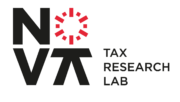Aware that the characteristics of crypto-assets make it very difficult for tax administrations to trace and identify taxable events, and instead of EU Member States adopting separate national legislation, the European Commission published a draft proposal on 8 December 2022 containing new tax transparency rules for service providers that facilitate transactions in crypto-assets for customers resident in the European Union, to help tax authorities collect information on crypto-assets and electronic money. On 16 May 2023, the EU Finance Ministers reached a political agreement on an updated compromise text of 5 May 2023 (“Compromise Text”) for the draft Council Directive amending Directive 2011/16/EU on administrative cooperation in the field of taxation (the “DAC8 Directive”).
The Compromise Text includes several measures to promote transparency and close loopholes that could facilitate tax evasion and tax avoidance. These measures concern the implementation of new Automatic Exchange of Information (“AEOI”) rules on crypto-assets and include new rules on the exchange of cross-border rulings on high-net-worth individuals (“HNWIs”). As crypto-assets and crypto-asset service providers are excluded from the current exchange of information regime, which could jeopardise the fairness of the tax system, one of the objectives of DAC8 proposal is to facilitate better cooperation between EU tax authorities by ensuring tax compliance on crypto-asset income, while minimising the inevitable additional compliance costs for intermediaries by providing a common EU reporting standard.
In this context, the new transparency rules will require crypto-asset service providers operating in the EU to collect and verify information on crypto-asset users through due diligence procedures and to report certain information on crypto-active transactions to local tax administrations, in order to enhance their ability to collect taxes on certain crypto-asset transactions or to audit tax returns where crypto-asset investments are involved. Crypto-asset service providers will be entities that are registered under the Markets in Cryptoassets (MiCA) Regulation (crypto-asset service providers) or entities that provide crypto-asset services under MiCA but are not required to register under MiCA (crypto-asset operators).
The definition of a “crypto-asset” is very broad and refers to any digital representation of a value or a right that can be electronically transferred and stored using distributed ledger or similar technology. It includes crypto-assets that have been issued in a decentralised manner, as well as stablecoins, including e-money tokens and certain non-fungible tokens (“NFTs”).
Accordingly, from 2026 onwards, crypto-asset service providers will have to conduct due diligence procedures on a wide range of transactions involving crypto-assets, including stablecoins, e-money tokens, and certain non-fungible tokens, of their EU resident clients and report information on such crypto-asset users to the relevant competent authority.
The competent authority of the Member State that receives information from the reporting crypto-asset service provider will then share this information with the competent authority of the relevant Member State where the reportable crypto-asset user is resident, as is already the case for conventional asset transactions under the previous versions of the Directive.
Remarks
Although the adoption of DAC8 is intended to address the secrecy and tax abuse risks posed by crypto-assets, DAC8 rules are designed around the outdated assumption that crypto-users rely on intermediaries to hold and trade crypto-assets.
However, the crypto ecosystem is deeply rooted in the premise of disintermediation, meaning that intermediaries are not essential for users to hold crypto-assets or conduct exchange transactions – intermediaries that can act as third-party information holders are not involved when it comes to users of self-hosted wallets (through which individuals can set up accounts to hold and transact crypto-assets without the involvement of an intermediary) or decentralised crypto exchanges (smart contracts rooted in the blockchain that provide for the ability to exchange crypto-assets online without the involvement of an intermediary). Thus, either through peer-to-peer trading or using decentralised applications, users of self-hosted wallets can easily trade crypto-assets, without the need for an intermediary.
Although the new rules require intermediaries to report crypto-assets to or from wallets used without a standard ‘centralised’ intermediary, it is questionable whether this measure alone will be sufficient to address this reality.
Another concern that has yet to be addressed is the use of blockchain-based applications, which are used to trade crypto-assets between users, via automated algorithms and smart contracts. The existence of these decentralised applications -which are not under sufficient influence or control to qualify as intermediaries with reporting obligations under DAC8 – means that crypto-asset users could enter into transactions in such assets without any obligation to report them to the tax authorities.
Concerns about these realities were raised by the G7 Finance Ministers and Central Bank Governors, at their meeting in Japan on 13 May 13, 2023, where they acknowledged the risks posed by crypto-asset activities and markets, namely “(…) the growing threats from illicit activities, in particular by state actors, including the theft of crypto-assets for proliferation financing, ransomware attacks, terrorist financing, and sanctions evasion (…)” as well as the emerging risks associated with peer-to-peer crypto-transactions.
In our view, both realities demonstrate that the current DAC8 framework has shortcomings, that still need to be addressed.
These shortcomings could be addressed by a mandatory declaration of ownership of self-hosted wallets by EU resident taxpayers. Such an obligation would allow this Directive to be a real milestone towards the goal of transparency and a much more efficient exchange of information on crypto-assets.
Otherwise, DAC8 will not be well equipped to deal with the tax challenges of the crypto-asset market, as (if we may use the simplistic expression) its design will represent “letting in by the window what the European Commission would not let in through the door…”.
Dalila Mendes Leal
June 2023
